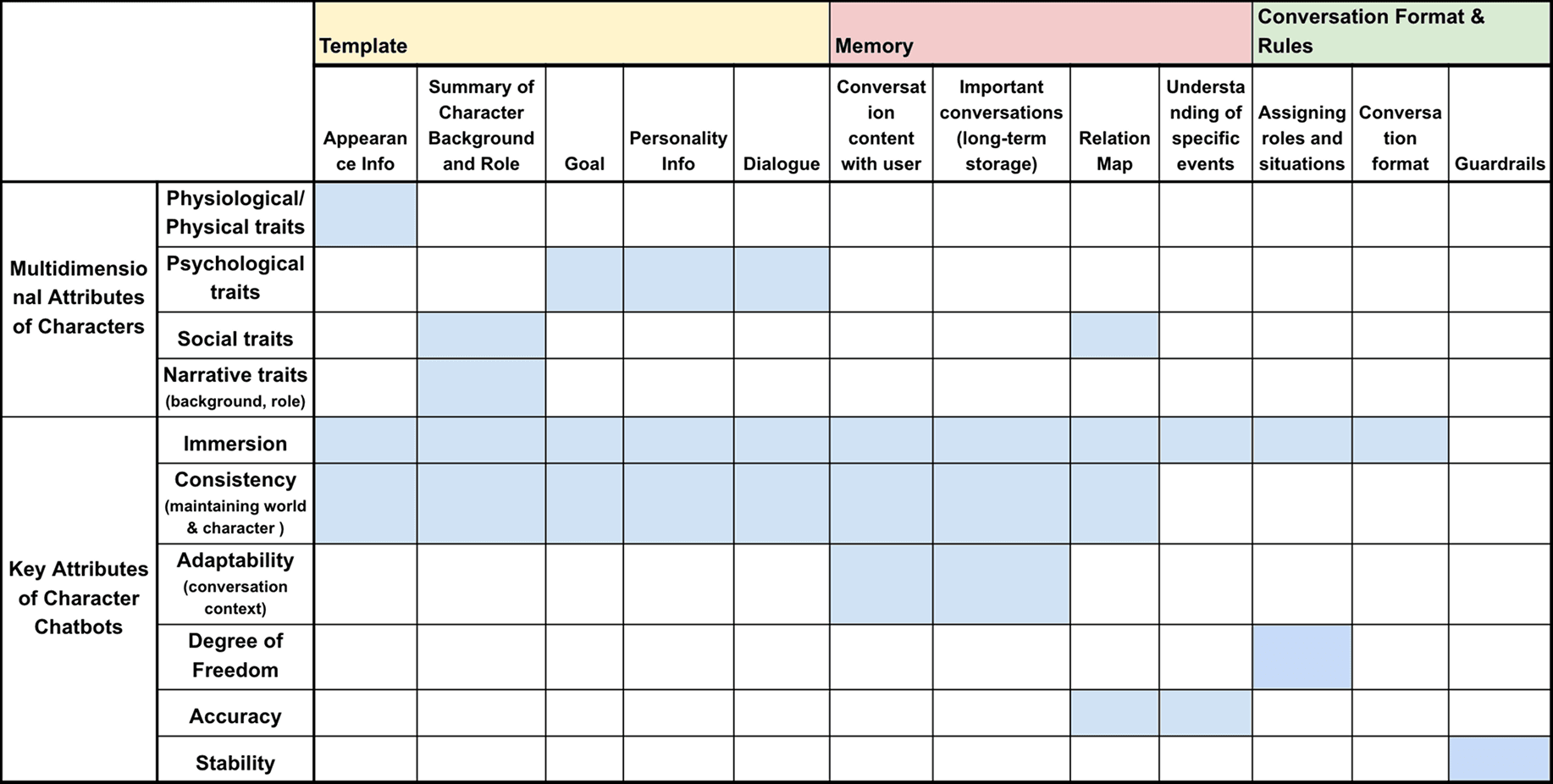

Technology for a Better World
A Multi-Character Dialogue System for Interactive Game Storytelling
Project Lead at NEOWIZ
Hajun Kim
Research Focus:
This research investigates the design and implementation of a novel multi-agent dialogue system aimed at enhancing player immersion and expanding game world-building. The core investigation centers on (1) developing a robust methodology for creating vivid, multi-dimensional character personas, and (2) engineering the interaction dynamics between multiple character agents, a user, and a central "Scenario Manager" agent to enable the co-creation of dynamic, "spin-off" narratives.



Key Contributions & Methodology
1. Multi-Dimensional Persona Framework
To create compelling characters, We conducted a foundational analysis of two areas: the essential components of character construction in narrative and the design principles of successful commercial chatbot services. This research produced a multi-dimensional persona framework for instantiating "three-dimensional" agents. This framework defines how to extract and structure personality traits, knowledge bases, and conversational styles from source material (e.g., existing lore and dialogue).
2. Multi-Agent Interaction & Turn-Taking Algorithm
Moving beyond traditional 1:1 chat, this system allows the user to interact with multiple character agents simultaneously.
- We designed a dynamic turn-taking algorithm that determines which character (or characters) should respond at each conversational turn, based on context, persona relevance, and narrative goals.
- To ensure user agency, the system also provides manual controls, allowing the user to directly adjust the conversational participation level of each character.
3. The "Scenario Manager" Agent
A distinct agent acts as a "Director" or "Game Master" to manage the macro-narrative.
- This Scenario Manager Agent monitors the full conversational context between the user and the character agents.
- Based on the dialogue, it dynamically generates and introduces new plot elements—such as a change in location or a new situation—to guide the interaction into new episodes. This ensures the co-created story progresses with diversity and coherence.